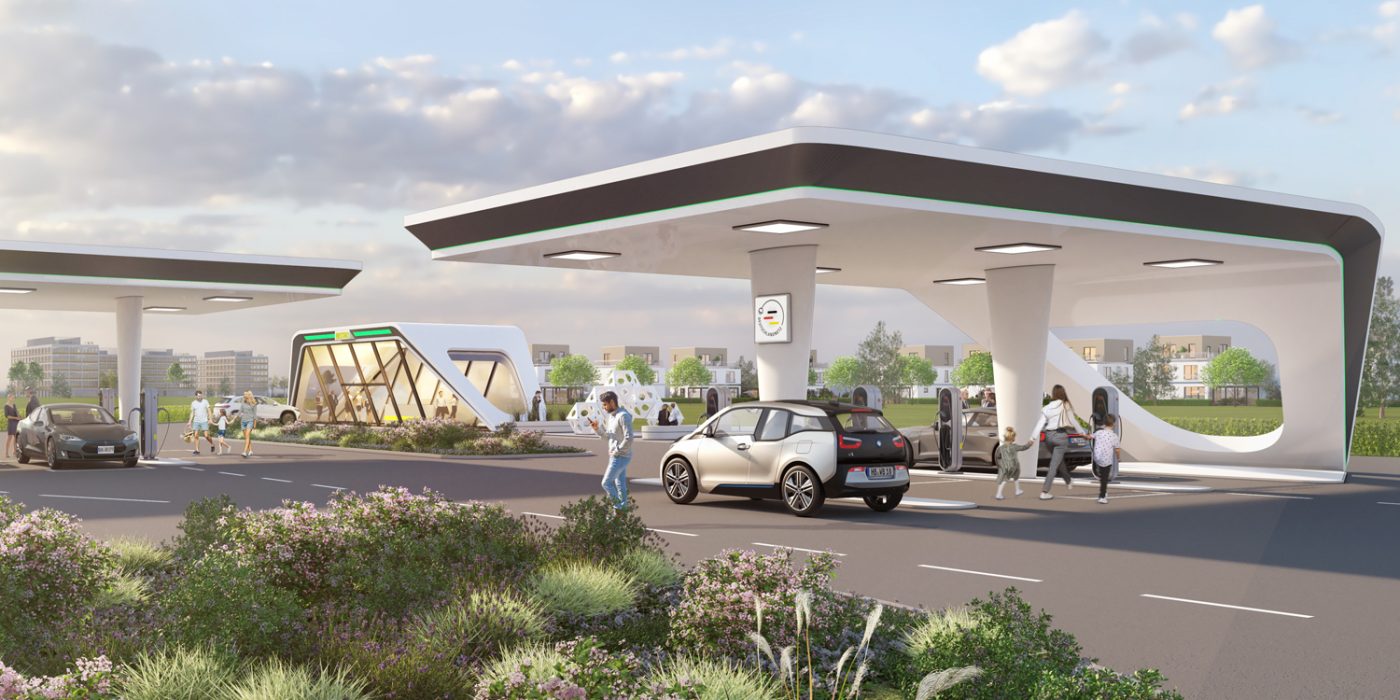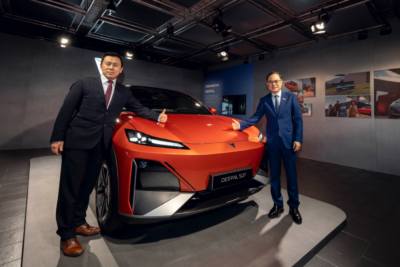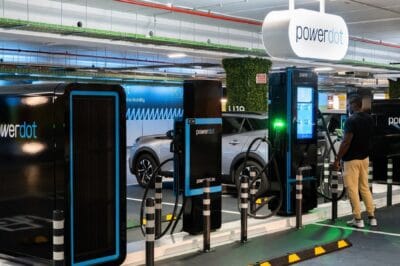Out now: Germany’s Master Plan Charging Infrastructure II
In Germany, the Master Plan for Charging Infrastructure II has been approved by the cabinet. With 68 measures, the Ministry of Transport wants to accelerate the expansion of the charging network and, this time, aims to incentivise private enterprise.
The second issue of the Master Plan Charging Infrastructure has now been published in English. Led by Germany’s Federal Minister for Digital and Transport, Volker Wissing (FDP) and approved by the German cabinet (led by the coalition of the liberals, Greens and social democrats), the German government wants to support the electric car market ramp-up. Wissing describes the master plan as a “roadmap for ensuring that Germany has a nationwide, needs-based and user-friendly charging infrastructure for electromobility”. With the specifications made in it, the Minister of Transport wants, in short, to accelerate the expansion, avoid gaps in supply and – as the intersection of the ministry with the departments of Digital Affairs and Transport suggests – improve the digitalisation of charging infrastructure.
Germany faces a set of unique circumstances. The central European country boasts over one million electric cars on German roads. As the world’s largest manufacturer of luxury cars, Germany is also home to the world’s largest automakers, with a clear imperative to show the rest of the world just how the transition to electric vehicles can be enabled.
The German transport minister sees that charging infrastructure is vital in enabling and nowadays supporting electric mobility as a mass market. The plan notes, “Electric mobility has left the market launch phase and entered a broad and dynamic market ramp-up phase.” This focus is well illustrated in the German transport ministry announcing the charging infrastructure master plan on its website with the heading: “Charging electric cars – easily, anywhere and anytime.”
The plan targets areas to implement this kind of infrastructure, as summarised on the ministry’s website under the headings of “Planning – We determine the demand for infrastructure and help to find suitable sites for it,” followed by sections to explain funding, implementation and understanding, the latter meaning analysing progress and finally, how the government aims to network to bring stakeholders together who are essential for local charging infrastructure and development.
According to the master plan, laws are to be updated to make engagement in charging infrastructure more accessible for all stakeholders and users. It addresses charging at buildings for private cars and small commercial vehicles. Targeted stakeholders must, for example, ensure that by the end of 2025, one-quarter of all employee parking spaces should be equipped with charging infrastructure. Previous obstacles to expansion, such as access to suitable space for charging point operators who would like to invest or the connection conditions to the respective electricity grids, are to be dismantled.
The measures include other elements like “Enhancing charging infrastructure through digitalisation” while addressing some of the issues faced by electricity grids by “Integrating charging infrastructure with the electricity systems,” which includes V2G and bidirectional charging, among other things. This includes “Data-based monitoring and controlling of demand, rollout and use.”
More engagement from the private sector
The Transport Minister from the neo-liberal, pro-free market party, the FDP, has explained that his approach is to clear the right of way for investments in charging infrastructure. In the introduction to the plan, the approach is outlined to “incentivise private sector investment, and the resulting charging infrastructure must be operated as quickly as possible by the private sector in a competitive environment. Here, the signature of the FDP becomes clearer (compared to previous drafts released in Germany), as the plan not only involves the commitment of the federal government, states and municipalities and much more engagement from the industry.
Measures 4 and 5 of the plan also specifically address the government’s expectations of the automobile and oil industries, respectively, which are called upon to make a “contribution to the forward-looking expansion of the charging infrastructure”. For the oil industry, by the end of 2026, fast chargers with at least 150 kW are to operate at least 75 per cent of their existing forecourts. The automobile industry is also expected to “increase its contributions in terms of investment in public and non-public charging infrastructure.”
Underserved areas are better catered for in other countries
The transport minister seems to have a straightforward approach to following markets. Those areas that are profitable should be built upon. The plan does not mention the provision of underserved areas, however, that present weaker business cases. In a time of impending economic crisis, people in car-dependent regions are likely to be left with few affordable options and less charging infrastructure.
This contrasts with charging infrastructure policies in other countries, more recently in Ireland or in the USA, where California represents the highest uptake of electric vehicles and underserved areas are specifically and repeatedly targeted with numerous infrastructure measures. Other plans also explicitly mention different transport modes to reduce emissions. For example, the Irish infrastructure plan states, “In the wider context of transport decarbonisation, other alternatives such as walking, cycling and public transport should always be considered before taking the option to drive. However, when driving is necessary, all EV charging infrastructure has the end purpose of serving EV users.”
Not only does the German plan neglect low-density areas, but it also targets explicitly high-density areas where citizens already have many mobility options. Titled “Financial assistance for deployment in more densely populated neighbourhoods,” the plan states that “Based on the determined demand, the Federal Ministry for Digital and Transport will examine by the first quarter of 2023 how charging options for users without their own parking space, particularly in more densely populated neighbourhoods of all settlement sizes, can be supported financially and through a combination of best practices.”
Here, the reliance on the car industry catering to a broad spectrum of society might be questionable. Among other things, Germany’s carmakers seem intent on prioritising enormous electric vehicles, unsurprisingly, since 60 per cent of German vehicle exports go to the USA. Volkswagen has recently decided to focus on increasingly large electric cars, which not only take up excess city space but also put more strain on grids.
That said, Germany’s grids are addressed in the plan with some measures for grid balancing and upgrades to accommodate whatever vehicles are to hit German roads.
V2G and Grids
Up to now, electric vehicles have not been mapped as energy storage that could be utilised for the grid. According to the Master Plan, the Ministry of Economics is to examine whether “new regulations for ‘mobile storage’ are required in the legal framework so that they can be inserted into the regulatory framework for grid- and market-serving flexibilities”. The plan generally also provides for information sharing, monitoring and oversight of which areas will need improvement, both of the grid and where charging points are required.
Heavy-duty vehicles and megawatt charging
Heavy goods transport is mentioned in three pages of the 40-page document with ten measures for electric trucks – primarily with transparency and information-sharing measures for mapping demand and grid requirements, but also concrete provision measures. “We are tendering for a fast-charging network for electric trucks along the main transport axes, thus giving the go-ahead for electric freight transport in Germany and the EU.”
Aside from the government’s master plan, Germany’s largest automakers, for example, are also making headway with “Milence” for commercial vehicle charging across Europe. This joint venture was founded by Daimler Truck, the Traton Group (Volkswagen) and the Volvo Group to build a high-performance charging network for heavy trucks and coaches in Europe.
Where is the electricity coming from, and for which users?
While Germany is forging ahead on electric truck charging with its MSC chargers, the elephant in the room is about to become palpable: Grid operators will face a rising demand for green energy as cars become increasingly electrified. While grid balancing measures with V2G technology and stationary battery storage make better use of the existing available energy, they don’t make more clean energy. Needless to say, Germany is ramping up its renewable energy capacity, but this is taking time.
Progress has already been made with fast charging, and more is to come.
Germany has already made significant steps with a comprehensive charging network. Existing measures and tenders are represented by the German initiative Deutschlandnetz, which the charging infrastructure master plan mentions once. Tenders for fast charging points have already been launched in many areas, and even before these are built, Germany is already ahead of European targets for charging infrastructure. The German infrastructure master plan addresses the tendering of further fast charging points with Measure 17: “After awarding the contracts for the two partial tenders in the Germany network from the end of 2021, the NLL, with the involvement of the ISLa, will prepare an analysis of possible remaining gaps in demand. The BMDV will examine the tender for additional publicly accessible fast charging points from 2023 as agreed in the coalition agreement. The exact number will be determined in the needs analysis.”
While the plan primarily focuses on chargers connected to the grid, it also leaves room for other charging methods already unfolding in Germany and the rest of Europe. The plan states, “In future, besides established charging infrastructure, other technologies, for example, swappable batteries, inductive charging or overhead lines systems, could also be an option and despite not being in widespread use at the moment, should therefore be taken into account.”
Overall, the country famous for its fine engineering appears to be in an exciting stage of gathering the data required for a bigger picture of electric mobility and its interaction with the provision of energy and grids. “By taking an integrated perspective, which combines charging technology and sites with mobility behaviour and logistical processes, a reliable strategy emerges for electric mobility that meets both current and future demand, is available all over Germany and paves the way for climate-friendly road freight and passenger transport,” at least according to the Master Plan II.





0 Comments